Cabbage worms can be a frustrating pest for any home gardener, but with the right identification, control, and prevention methods, you can keep these pests at bay and enjoy a healthy Cabbage harvest. By understanding what Cabbage worms are and how to identify them, you can take the necessary steps to protect your plants. Remember that prevention is key to keeping these pests away from your garden.
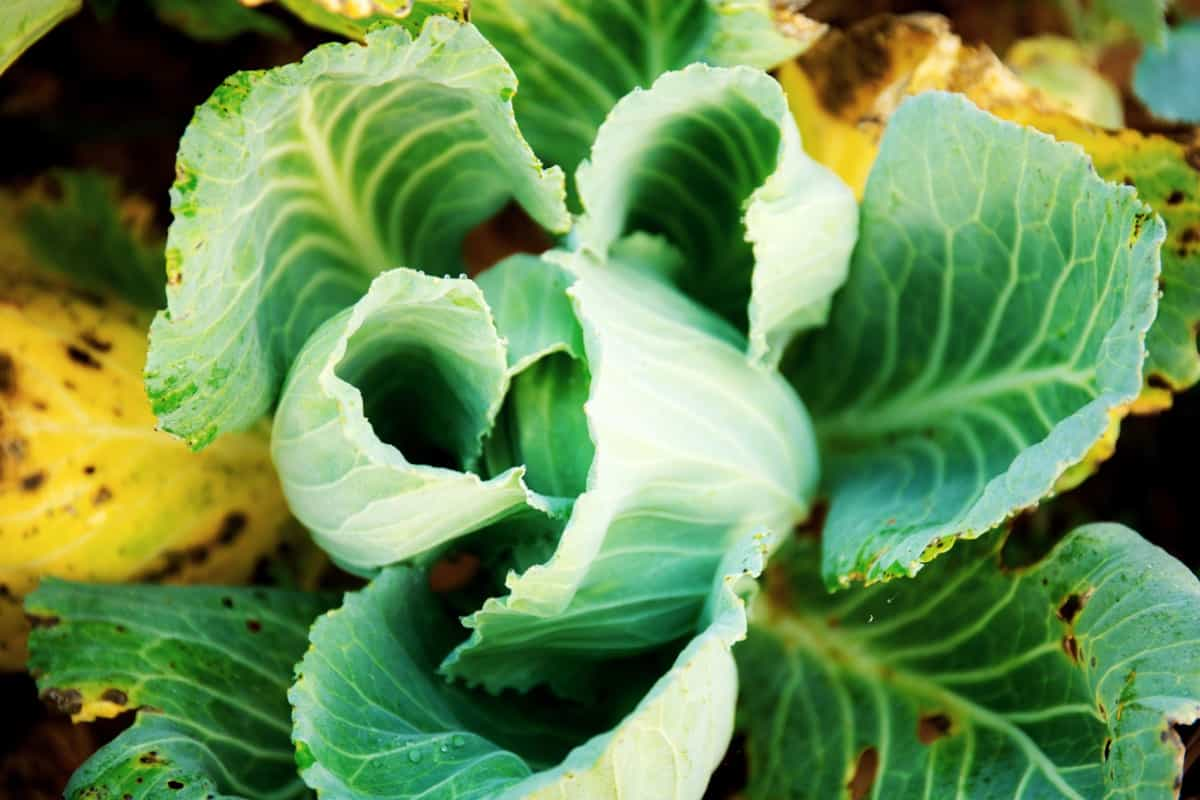
Implementing good gardening practices such as crop rotation, proper plant spacing, good hygiene in your garden area, and attracting beneficial insects will help deter Cabbage worms from making themselves at home. So, wear your gardening gloves and teach yourself how to combat Cabbage worms. With careful attention and proactive measures throughout the growing season, you can maintain healthy Cabbage crops without letting those voracious caterpillars ruin all your hard work.
How to Get Rid of Cabbage Worms
Introduction to Cabbage Worms: Its Impact on Cabbage Plants
Cabbage worms are a common pest that can wreak havoc on your Cabbage plants. Feeding primarily on the leaves of Cabbage plants, these voracious eaters can quickly strip away foliage, leaving behind bare stems. This impacts your Cabbage plants’ overall health and vigor and reduces their ability to produce a bountiful harvest. One of the main culprits responsible for this devastation is the larvae of certain species of butterflies and moths, including the infamous Cabbage white butterfly.
These pests lay eggs on the undersides of Cabbage leaves, which hatch into ravenous caterpillars that go straight for your beloved Cabbages. The impact of Cabbage worms extends beyond mere aesthetic damage. Their feeding habits create entry points for other diseases and pests, making your Cabbages more vulnerable overall. Additionally, severe infestations can significantly reduce crop yields and render them inedible.
Identifying Cabbage Worms: Recognizing the Signs and Symptoms of Infestation
These pesky little critters are the larvae of Cabbage white butterflies and can quickly multiply, causing extensive damage to your crops. You can act before they decimate your patch by learning to identify Cabbage worms. One telltale sign of Cabbage worm infestation is the presence of small holes in the leaves. The worms create these holes as they voraciously feed on the foliage.
As the infestation progresses, you may also notice chewed or ragged edges on the leaves, indicating a larger population of hungry caterpillars. Another way to identify Cabbageworm infestations is by looking for their droppings or frass. Cabbage Worm frass resembles tiny black pellets and can often be found near feeding sites or at the base of affected plants.
Natural Control Methods for Cabbage Worms: Using Beneficial Insects and Birds
When combating Cabbage worms, nature has its built-in pest control system. One of the most effective methods is harnessing the power of beneficial insects and birds. These natural predators can help keep Cabbage Worm populations in check without using chemical pesticides. Birds like sparrows and chickadees are voracious eaters of caterpillars, including those pesky Cabbage worms.
In case you missed it: How to Grow Cabbage in Containers from Scratch: A Successful Guide for Beginners
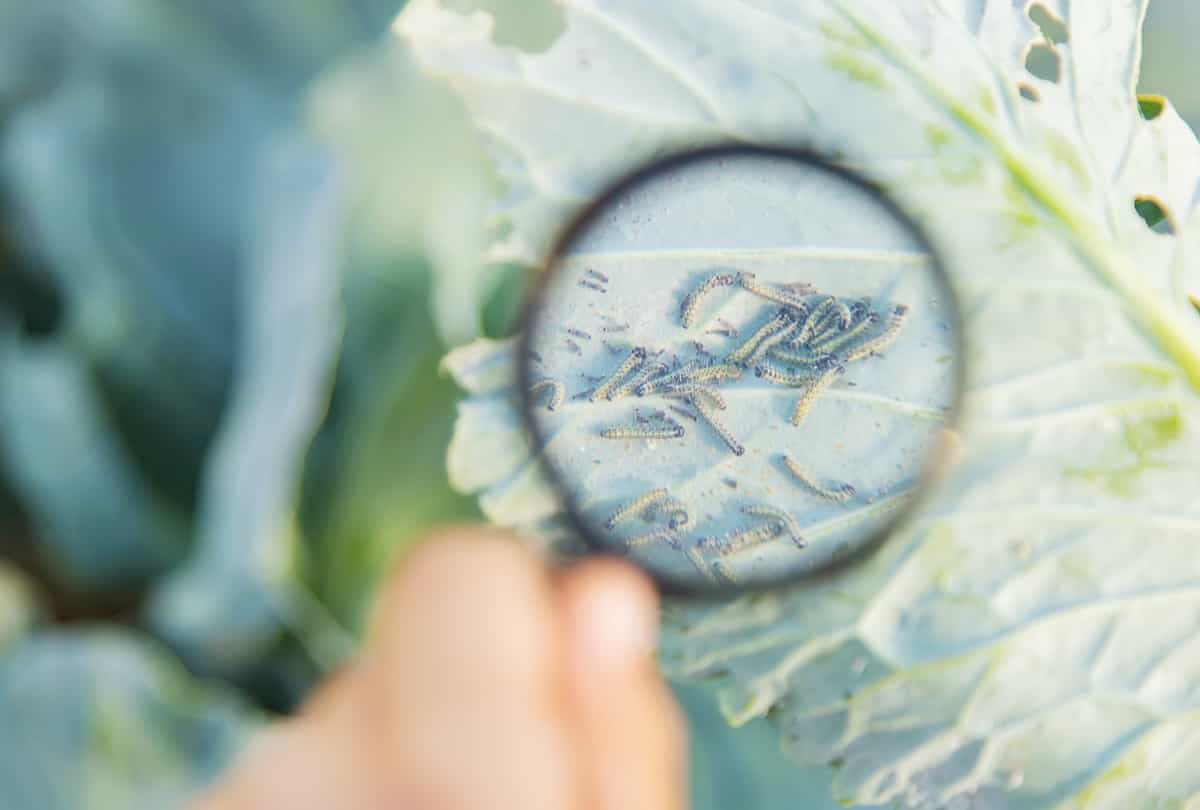
By attracting these feathered friends with bird feeders or nesting boxes near your garden, you can encourage them to patrol your plants and keep the worm population under control. Creating a welcoming environment for beneficial insects and birds involves providing shelter, food sources, and water throughout the year. Planting various flowering plants will attract pollinators and predator insects that prey on Cabbage worms.
Chemical Control Options for Cabbage Worms: Pesticides and Insecticides
Regarding combating Cabbage worms, some gardeners may use chemical control options as a last resort. Pesticides and insecticides can effectively control pests but should always be used cautiously. One commonly used pesticide for Cabbage worms is Bacillus thuringiensis, a naturally occurring bacteria that targets Cabbage worms and other caterpillars. Bacillus thuringiensis is safe for humans and beneficial insects, making it an appealing choice for organic gardeners.
Another option is spinosad, which is derived from soil bacteria. Spinosad affects the nervous system of Cabbage worms, ultimately leading to their demise. However, it’s important to note that spinosad can harm beneficial insects if not applied properly. Before using any chemical control method, you should read and follow all product label instructions. Always wear protective clothing and consider applying pesticides when pollinators are less active.
Cultural Control Practices: Crop Rotation and Sanitation Measures
Crop rotation and sanitation measures are essential cultural control practices to manage Cabbage Worm infestations effectively. By implementing these methods, gardeners can disrupt the life cycle of Cabbage worms and reduce their populations without relying on chemicals. Crop rotation means changing the location of crops within your garden each year.
This practice is beneficial because it prevents Cabbage worms from finding a reliable food source. Moving Cabbage plants to a different area in your garden makes it difficult for adult moths to locate them and lay eggs. Sanitation measures also play a crucial role in controlling Cabbage Worm populations. Removing debris or plant residues after harvesting your Cabbages is important.
In case you missed it: How to Grow Cabbage from Seed to Harvest: Check How this Guide Helps Beginners
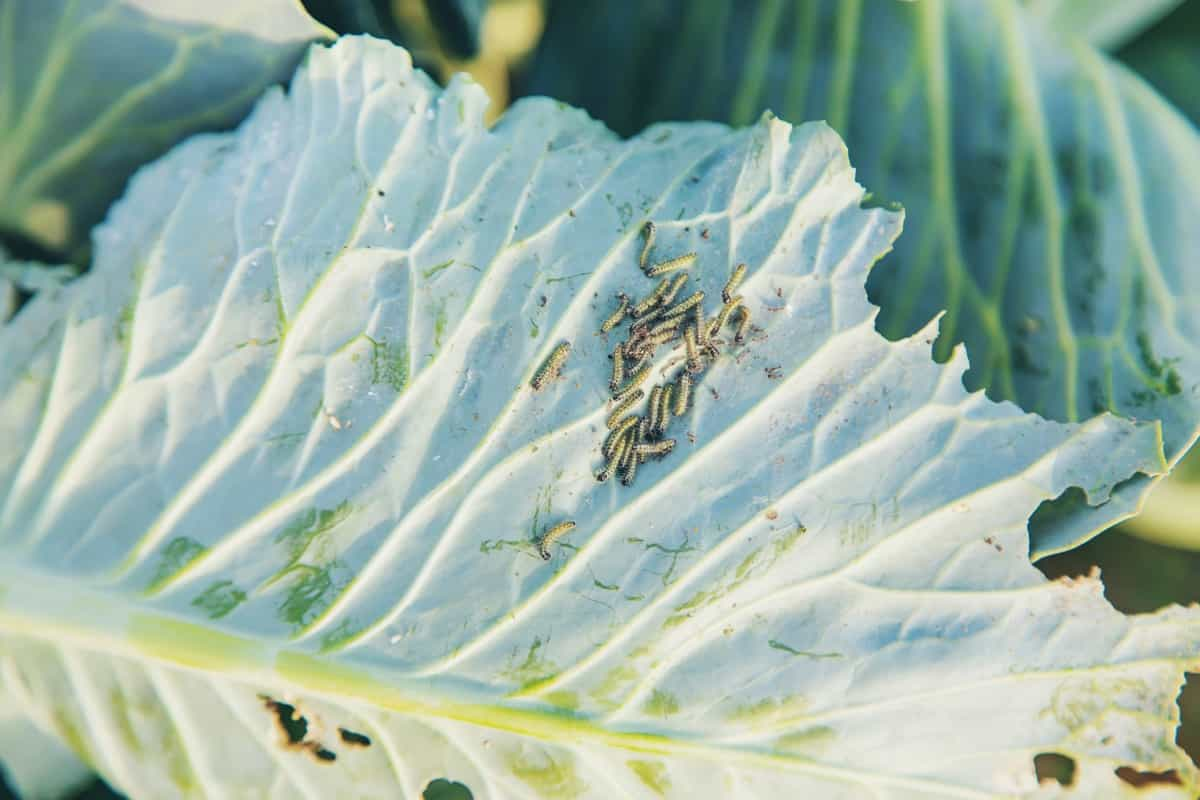
These remnants can serve as overwintering sites for pests, allowing them to survive and reinfest your plants the following season. Regularly inspecting your crops for signs of infestation is another key aspect of sanitation measures. If you spot any eggs, larvae, or adult worms on your Cabbage, remove them immediately by handpicking or using a gentle spray of water.
Companion Planting to Deter Cabbage Worms: Effective Plant Combinations
One effective method for deterring Cabbage worms is through companion planting. Marigolds are one popular choice for companion planting for Cabbage worms. The strong scent of marigolds is a deterrent, keeping the worms away from your precious Cabbages. You can plant Marigolds around the perimeter of your garden or directly alongside your Cabbage plants. Thyme is another plant that works well as a companion to deter Cabbage worms. Thyme releases an aroma that repels Cabbage worms and other harmful insects in the garden.
Nasturtiums are another great option for companion planting with Cabbages. These colorful flowers brighten your garden and attract beneficial insects, which feed on Cabbageworm larvae. Other helpful companions include Dill and Celery. Both plants produce strong scents that ward off Cabbage worms and offer additional benefits in terms of culinary uses.
Physical Barriers for Cabbage Worm Prevention: Netting and Row Covers
One effective method to prevent Cabbageworm infestations is using physical barriers such as netting and row covers. These barriers create a barrier between the pests and your precious Cabbage plants, preventing them from landing on the leaves. Netting is a lightweight mesh material that can be draped over your Cabbage plants. It allows sunlight, air, and water to reach the plants while keeping out insects. Secure the edges of the netting tightly to prevent any gaps where pests can sneak in.
Row covers are similar but are designed specifically for rows of plants. They are made of spun-bonded polyester fabric or floating row cover material. These covers not only protect against Cabbage worms but also provide some protection against other pests like aphids and flea beetles. When using either netting or row covers, it’s important to ensure they are properly installed with no gaps or loose ends. Regular monitoring is crucial so you can address any issues promptly.
Homemade Remedies for Cabbage Worms: DIY Organic Solutions
One effective homemade spray for Cabbage worms is using soap and water. Simply combine two to three drops of dish soap with water in a spray bottle and generously spritz it onto your Cabbage leaves. The soapy solution will suffocate the worms, leaving your plants unharmed. Another natural remedy involves creating a garlic and chili pepper spray. Crush some garlic cloves and finely chop some chili peppers, then mix them with water. Let the mixture sit overnight, strain it into a spray bottle, and apply it to your Cabbage plants.
In case you missed it: How to Prepare the Soil for Cabbage Plants: Best Soil Mix, pH, and Compost
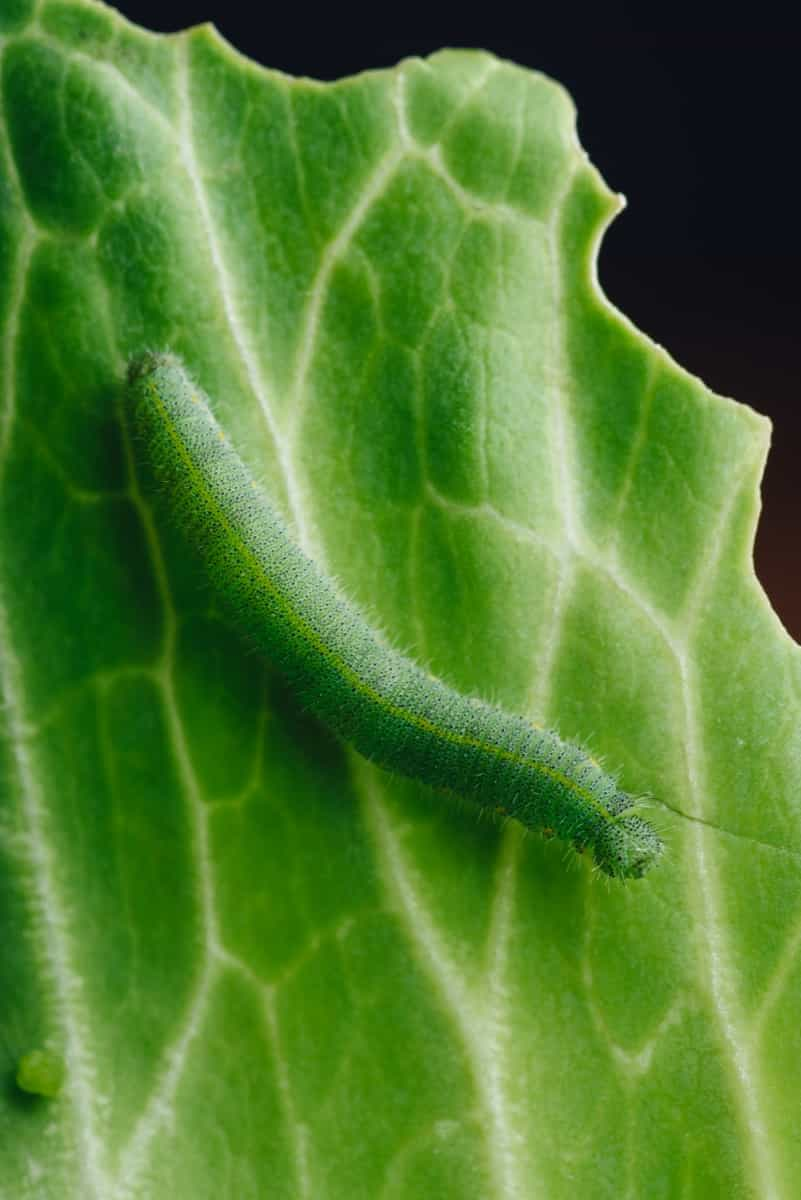
The strong odor will deter the worms from munching on them. Consider sprinkling diatomaceous earth around your Cabbage patch if you prefer an even simpler solution. This powdery substance consists of fossilized remains with sharp edges capable of piercing through the protective layer on insects’ bodies. Sprinkle it directly onto the leaves or create a barrier around your plants to keep those Cabbage worms at bay.
Timing the Application of Control Measures: Best Practices
One crucial aspect of effectively managing Cabbage Worm infestations is timing the application of control measures. Understanding the Cabbage Worm life cycle and behavior patterns allows you to implement control methods at opportune times. First and foremost, monitoring your Cabbage plants regularly for any signs of infestation is important. Keep a close eye on leaf damage caused by small green caterpillars, which usually indicates that Cabbage worms are present.
Once you’ve identified an infestation, act promptly to minimize crop damage. One effective approach is to apply organic solutions or natural predators early in the morning or evening when Cabbage worms feed actively. This allows for better contact with both adult moths and their larvae. Additionally, consider weather conditions when timing your control measures. Applying pesticides or insecticides during calm days without heavy rainfall ensures proper adherence and effectiveness.
Another factor to consider is the plant growth stage. Apply control methods during the early stages of plant development to prevent severe infestations later. Remember that prevention is always better than cure. Implementing preventive measures before an infestation occurs can significantly reduce Cabbage Worm populations. For instance, if you notice adult moths flying around your garden, set up physical barriers like netting or row covers immediately to block their access to vulnerable plants.
Monitoring and Early Detection of Cabbage Worm Infestations
Monitoring and early detection of Cabbage Worm infestations is essential for maintaining the health of your Cabbage plants. One effective monitoring method is visually inspecting the leaves, particularly the undersides, where Cabbage worms tend to hide. Look out for small green caterpillars or their eggs, usually laid in clusters on the underside of leaves. Additionally, watch for chewed or damaged foliage as a sign of infestation. Another way to monitor Cabbage Worm populations is through pheromone traps.
In case you missed it: 20 Common Cabbage Plant Problems: How to Fix Them, Solutions, and Treatment
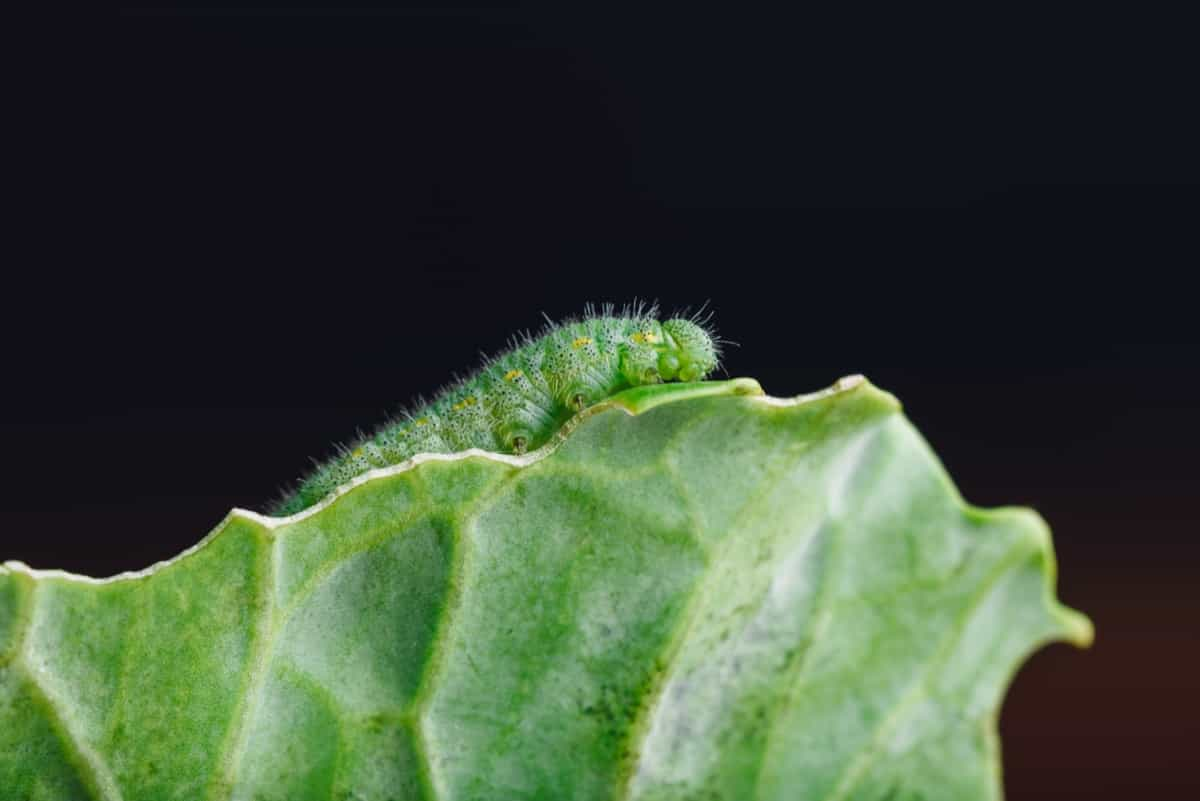
These traps release synthetic hormones that attract male moths, helping you determine if an active population is nearby. Regularly checking your plants allows you to act promptly if any signs of infestation are detected. Early detection gives you a better chance at controlling and preventing further damage caused by Cabbage worms. Remember that prevention plays a key role in monitoring as well. Implement cultural control practices such as crop rotation and sanitation measures to reduce the likelihood of attracting Cabbage worms in the first place.
Preventing Future Infestations
You can take several key steps when protecting your Cabbage plants from future infestations of those pesky Cabbage worms. First and foremost, practice good crop rotation. Moving your Cabbage plants to a different location in your garden each year makes it more difficult for the worms to find them again. Another important measure is practicing proper sanitation. This means regularly cleaning up fallen leaves or debris around your Cabbage plants.
Cabbage Worm eggs can overwinter in plant residue, so removing this potential habitat greatly reduces their chances of survival. Companion planting is another effective strategy for preventing future infestations. Certain plants like Marigolds and Nasturtiums naturally repel Cabbage worms. You create a natural barrier that prevents pests from laying their eggs on the leaves by interplanting these flowers with your Cabbages.
In case you missed it: Best Fertilizer for Cabbage: Homemade, Natural, Organic, and NPK
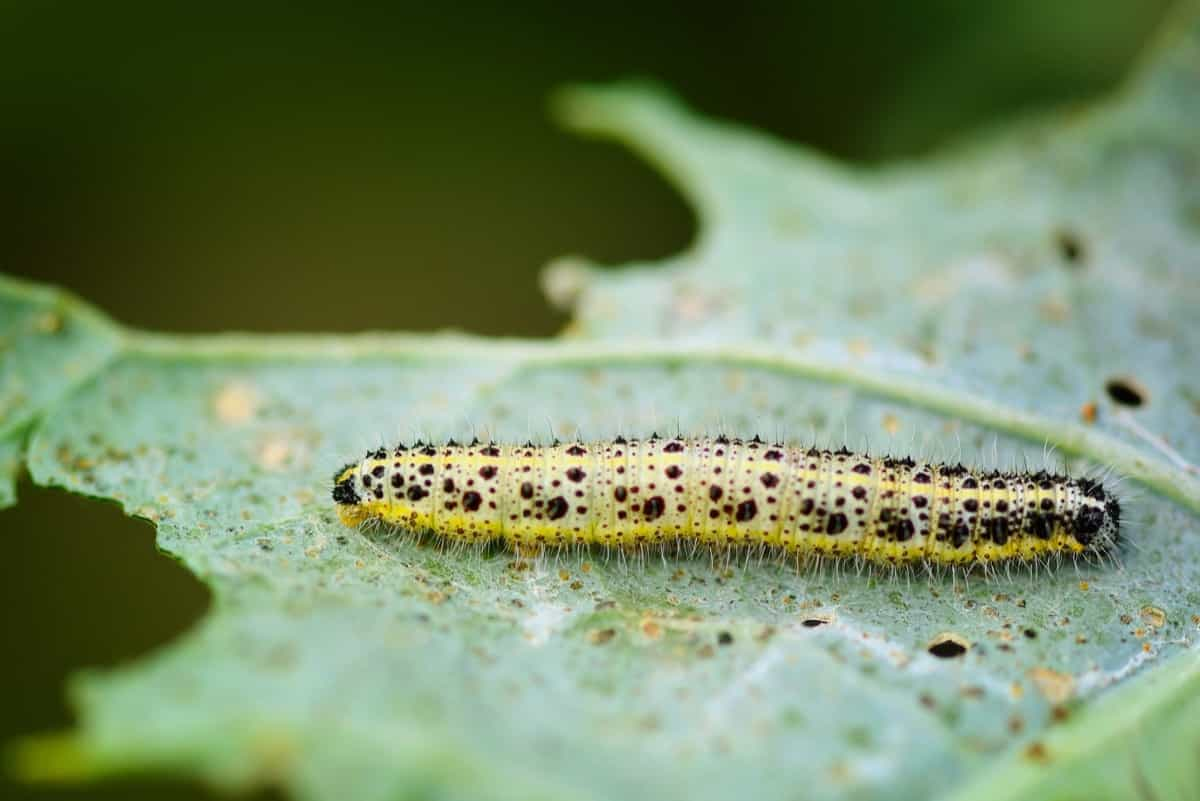
Physical barriers such as netting or row covers can also keep Cabbage worms at bay. These barriers physically prevent adult butterflies from reaching your crops and depositing their eggs. Consider selecting varieties of Cabbage that are resistant to Cabbage worms. Some cultivars have been bred specifically for this purpose and have built-in defenses against these pests.
Conclusion
Cabbage worms can be frustrating for gardeners, but with the right identification, control, and prevention methods, you can manage their presence in your Cabbage patch. By understanding Cabbage worms and how to identify them, you’ll be better equipped to act when necessary. When it comes to controlling Cabbage worms, there are several approaches you can take. From handpicking them off plants to using natural or organic insecticides, choose the method that aligns with your gardening philosophy and suits your needs.
- Gardening Techniques in Planting Vegetables
- Where to Place Indoor Plants in Your Home
- How to Grow Tomatoes Organically at Home: A Comprehensive Guide
- Organic Gardening on a Budget: Low-Cost Methods and Materials
- Gongura Seed Germination and Planting Methods
- Cabbage Seed Germination and Selection
- Broccoli Seed Germination and Selection
- Asparagus Seed Germination and Variety Selection
- Seasonal Flower Gardening: Best Practices for Spring, Summer, Fall, and Winter
- How to Grow Hibiscus from Flower
- Plantation Ideas for Home Decoration: A Beginners Guide
- Flower Garden Designs and Layouts for Beginners
- Planting and Spacing Techniques in Papaya: A Beginner’s Guide
- Growing Gold: Essential Techniques for Planting Pineapples
- How to Make Kalanchoe Plant Bushy: Home Remedies and Solutions
- 11 Reasons Why Your Gardenia is Not Blooming: Home Remedies and Solutions
- Eco Elegance: The Guide to Designing a Drought-Tolerant Landscape
- Gardening on a Slope: Strategies for Hillside Landscaping
- Nourish and Flourish: Top Organic Mulches for Thriving House Plants
- Everything You Want to Know about Indian Mogra Flower: Discover Uses and Growing
- Green Thumb Success: Expert Tips for Cultivating Greenhouse Pumpkins All Year Round
- Maximize Growth & Flavor: The Ultimate Guide to Companion Planting in Herb Gardens
- How to Control Rhododendron Problems Naturally: Home Remedies and Organic Ways to Fix Them
- Natural Magic: The Remarkable Benefits of Cinnamon for Plants
- Best Steps to Revive Dying Tulip with Natural and Organic Treatment
- 10 Reasons Why Your Angel Trumpet is Not Blooming: Remedies and Treatment
- How to Fix Periwinkle Leaf and Flower-Related Problems: Natural Remedies and Solutions
- How to Fix Zinnias Leaf and Flower Problems: Discover Natural and Home Remedies
- Organic Steps to Induce Lemon Tree Flowers: A Comprehensive Guide
- Bloom Booster: Crafting the Perfect Homemade Bougainvillea Fertilizer
- Optimizing Growth: A Guide to Applying NPK Fertilizer for Potted Plants
- 10 Best Homemade Fertilizers for Rubber Plant: DIY Recipes and Application Method
- How to Boost Female Pumpkin Flowers: Effective Steps for More Flowers and High Yields
- Transform Your Indoor Garden: Top Benefits of Pink Salt for Houseplants
- 10 Best Homemade Fertilizers for Peacock Plants (Calathea): Easy DIY Guide
- Unlock Blooms: 9 Reasons Why Your Potted Chrysanthemum is Not Blooming